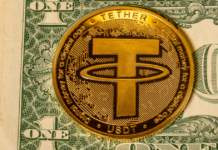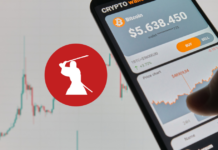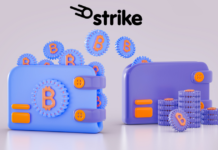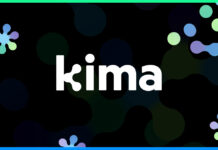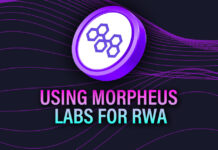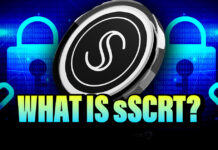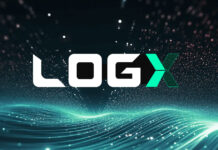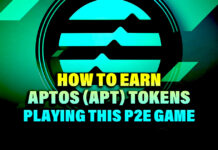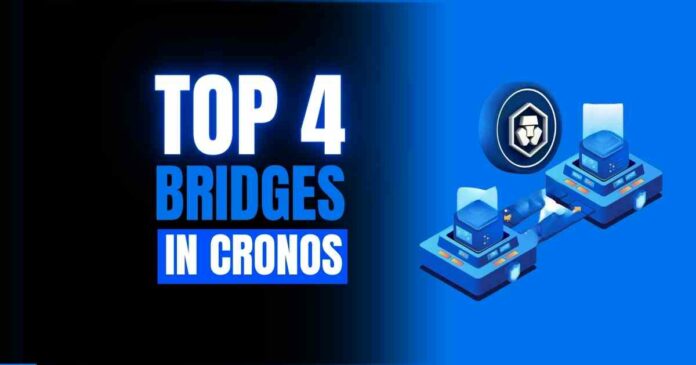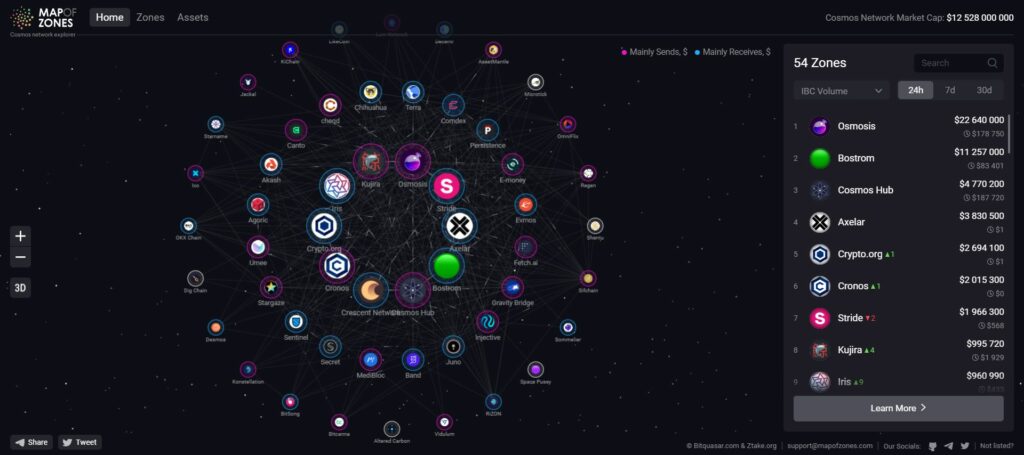Cronos is a layer 1 blockchain built in the Cosmos ecosystem. As a result, it connects to the IBC (the Inter-Blockchain Communication Protocol). These are quite a few blockchains that are also built on Cosmos. However, Cronos is also EVM compatible.
As a result, it connects the Ethereum and Cosmos ecosystems. To achieve this, it needs bridges. So, we are going to look at the top 4 bridges for Cronos.
3 more days till Cronos mainnet launch where multiple DeFi protocols will go live. Are you ready?
🌉Bridging assets into a new chain is always tricky. We have prepared a guide on the multiple ways you can safely bridge your assets into Cronos on Day 1 – https://t.co/cWpaHBK2en pic.twitter.com/vuZ6AlpRPg
— Cronos (@cronos_chain) November 5, 2021
1) Cronos Bridge
The Cronos bridge can transfer digital assets between selected chains. Currently, these are the Crypto.org chain, Cosmos, Akash, and Cronos. The bridge to Terra is currently paused, and an Ethereum bridge option is coming soon.
So, the cronos bridge is a decentralized bridge built on IBC and the Gravity Bridge. As we just saw, the Cronos bridge works in the IBC ecosystem. On the other hand, Gravity Bridge is a blockchain. It bridges between the Ethereum and Cosmos ecosystems.
To use the Cronos Bridge, you use the CRO token to pay all related fees. However, for your first transaction from Cronos to another chain, you get a free token. There’s a faucet that airdrops on the destination chain. Cronos currently supports three tokens and three wallets. For instance:
- Tokens: CRO, ATOM, and AKT.
- Wallets: Metamask, Keplr, Crypto.com DeFi Wallet.
Source: Cronos Bridge app
2) Multichain
Multichain used to be Anyswap. This project has backing from well-known industry leaders. For example, Binance invested $350,000 as part of their accelerator program. Furthermore, Binance Labs led a $60 million investment round.
Currently, Multichain connects over 70 chains. Of course, Cronos is one of them. Other chains are, for example, Aptos, Cardano, Fantom, Litecoin, Near, or Solana.
For native tokens, Multichain uses liquidity pools and swaps cryptocurrencies across chains. When there is no native token, Multichain locks the token in a smart contract. At the destination chain, it will mint a pegged token. This is a wrapped token. Multichain can also bridge NFTs.
The bridging can take up to 30 minutes. However, Multichain boasts that there’s no slippage. This is the difference between the expected and real price of a trade. The team keeps on top of new developments and recently released a new whitepaper. They based this on zero knowledge proof.
👁🗨#zkRouter Whitepaper Released
A trustless, general cross-chain infrastructure is born!As #Multichain's latest development, #zkRouter based on zero-knowledge proof would be the next evolution in bridging area.
Whitepaper ➡️https://t.co/tUBsJ12c2i pic.twitter.com/akEmdAvVq7
— Multichain (Previously Anyswap) (@MultichainOrg) January 13, 2023
3) XY Finance
XY Finance aggregates not only DEXes but also bridges. Their XY token fuels their protocol. The protocol looks for the best possible route, for your assets. Furthermore, it looks for the best rate, speed, and security. Using the XY Finance bridge, you can bridge 15 chains and all their tokens to Cronos. For instance:
- Arbitrum.
- Avalanche.
- Binance Chain.
- Ethereum.
- Fantom.
- Optimism.
- Polygon.
You can use a variety of wallets to bridge tokens with XY Finance. As you can see, by the supported chains, you will need an Ethereum compatible wallet. Rabby, Trust Wallet, Rainbow Wallet, or MetaMask will work fine. Multichain uses two features for bridging:
- X Swap: Uses the fastest and cheapest route to swap tokens.
- Y Pool: Is the bridge.
#XYFinance lowered the #crosschain transaction fee 🔥
✅ 14 Supported #Blockchain
✅ 270+ Supported #DEXs
✅ 120K+ Supported Tokens
✅ Best routing
✅ Best price
✅ Lower risk to price impact
✅ Swap tokens across 14 chainsMore details 👇 https://t.co/eXeulDaOF8 pic.twitter.com/68q5lEwtO6
— XY Finance | DEX & Bridge | (@xyfinance) December 23, 2022
4) Cosmos IBC Hub
The Cosmos Hub are all the interconnected blockchains in the Cosmos ecosystem. Cosmos has the ATOM token, but each chain has its own token. It’s the Internet of Blockchains. There are many blockchains in the IBC system that cover different grounds, for example:
- Osmosis is a DEX.
- Secret Network emphasizes privacy.
- Axelar offers cross-chain communication.
- Stargaze is an NFT marketplace.
- Kava is a DeFi landing platform.
- Gravity Bridge connects the Ethereum and Cosmos ecosystems.
- Cronos connects EVM chains with the Cosmos ecosystem.
With Cosmos IBC Hub, you can transfer the ATOM token cross-chain now. Because Cronos has a built-in IBC module, it can connect with other IBC chains. On the other hand, it also supports EVM chains.
As a result, it supports both IBC tokens and ERC20 tokens. It has a built-in module that converts the two tokens. You can use the Keplr wallet for the Cosmos side and MetaMask for the Cronos side. The Crypto.com DeFi wallet works for both sides. Below is a picture of the Cosmos zones. These are the hubs and zones of the Cosmos Network.
Source: Map of Zones
Conclusion
We showed you four different bridge options for the Cronos blockchain. These are the Cronos Bridge, Multichain, XY Finance, and the main Cosmos IBC Hub.
The current price of the Cronos token is $0.086294. CRO has a market cap of $2.17 billion. Out of the 30 billion total supply of CRO tokens, 25 billion already circulate.
⬆️ For more cryptocurrency news, check out the Altcoin Buzz YouTube channel.
⬆️ Our popular Altcoin Buzz Access group generates tons of alpha for our subscribers. And for a limited time, it’s Free. Click the link and join the conversation today.


